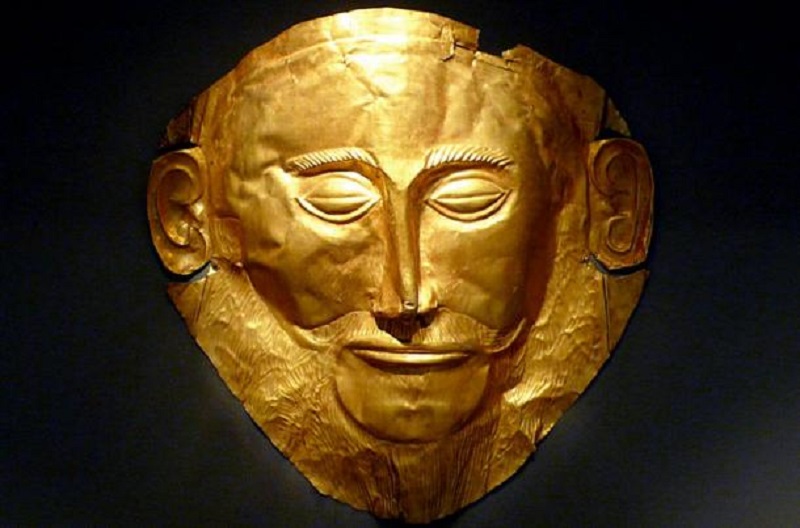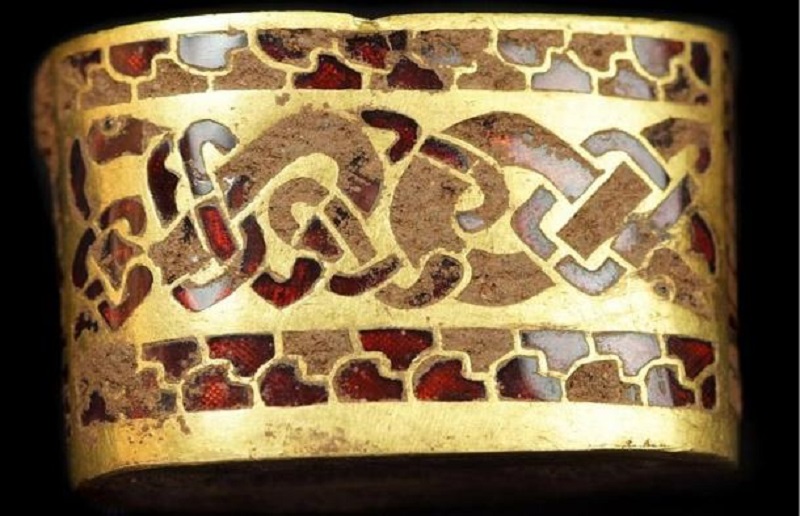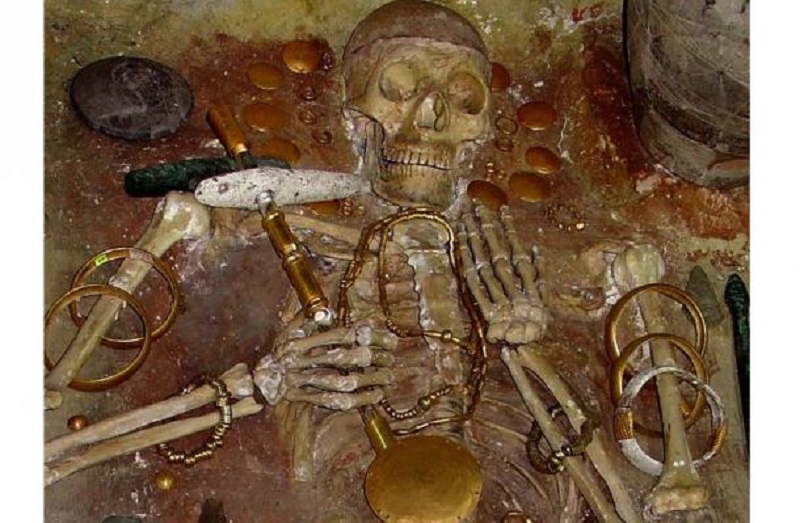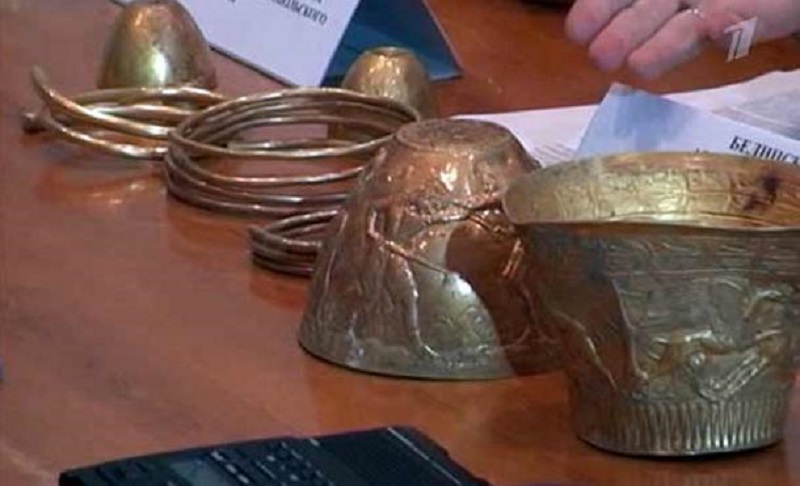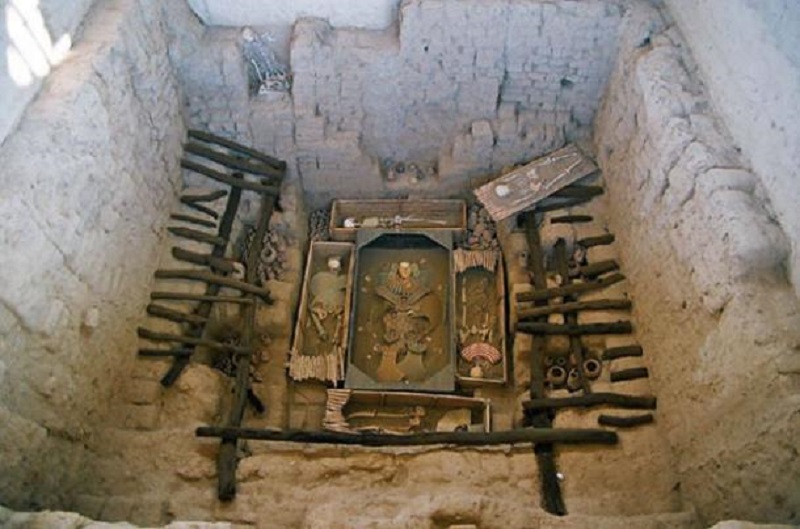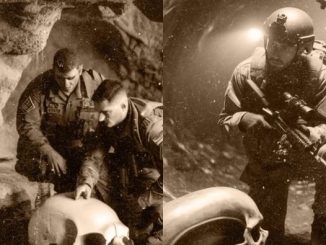Agamemnon’s Golden Death Mask – Greece
Having discovered the true location of the legendary city of Troy, Heinrich Schliemann’s next project was to discover the final resting place of Agamemnon, king of Mycenae, who led the Greek forces during the Trojan War. Troy. Although it is debatable whether Schliemann achieved his second goal, he certainly made another impressive discovery in the process – ‘The Mask of Agamemnon’.
In 1876, Schliemann began excavations at Mycenae on behalf of the Hellenic Archaeological Society. Schliemann’s workers would soon discover stelae marking the boundaries of a grave circle about 27.5 meters (90 feet) across. It contains five Late Bronze Age shaft tombs. Schliemann’s excavation of the tombs in the shaft revealed that they contained the remains of several Mycenaean leaders, five of whom wore golden masks. In a telegram to King George of Greece, Schliemann proudly declared: “I am extremely pleased to inform Your Majesty that I have discovered the tombs which the Pausanias tradition claims to point to as the graves of Agamemnon, Cassandra, Eurymedon and their companions were all killed at the feast of Clytemnestra and her lover Aegisthos.”
Schliemann suggested that one of the remains belonged to Agamemnon himself, hence the golden mask on his face became known as ‘Agamemnon’s Mask’. This mask is a death mask, made of a thick gold plate stamped on a wooden base. A sharp tool was then used to carve out the finer details. Of the five golden masks, this is the only one that depicts a bearded man, so Schliemann concluded that it belonged to Agamemnon. Although Schliemann’s discovery is truly remarkable, whether it belongs to Agamemnon or not is still a matter of debate.
Incredible Gold Treasures of Staffordshire Anglo-Saxon – England
On July 5, 2009, amateur treasure hunter Terry Herbert was using a metal detector to search farmland in the village of Hammerwich, Staffordshire, England, when his metal detector signaled that he had found see a metal object. He quickly discovered that he had struck gold both literally and figuratively. Within five days, Herbert filled 244 bags with gold objects that had been pulled out of the ground. At this time, he realized that this location must have great historical significance, so he contacted the local government. Before long, Birmingham Archeology was on site to conduct an excavation, covering an area of 30 x 43 feet, in the hope of recovering all objects that might have been lost. thrown and scattered by plowing fields. During this excavation, more than 3,500 pieces were discovered, including 5 kg (11 pounds) of gold and 1.3 kg (2.9 pounds) of silver. This is the largest trove of Anglo-Saxon gold and metals ever found.
Pieces from the treasure trove were displayed at Birmingham Museum & Art Gallery, until they were declared “treasure” and therefore property of the Crown, worth £3.3 million ( about 5.4 million USD). Most researchers agree that the fragments tend to be dated to the 7th century AD, although it is unknown when they were actually buried or deposited in their final location or for what reason. What for.
Varna man and the richest tomb of the 5th millennium BC – Bulgaria
In the 1970s, archaeologists in Bulgaria stumbled upon a vast Bronze Age necropolis from the 5th millennium BC that contained the oldest gold artifacts ever discovered near the city of Varna today. But it wasn’t until they reached the 43rd tomb that they realized the true meaning of this discovery. Inside the 43rd tomb were the remains of a man of high status and immeasurable wealth – more gold was found in this tomb than in the entire rest of the world during that period.
The Varna culture, which appeared on the shores of the Black Sea lake about 7,000 years ago in Bulgaria, was not a small and insignificant society that appeared in a small corner of Bulgaria and quickly disappeared into the pages of history. Rather, it was an incredibly advanced civilization and the first known culture to make gold artifacts.
The first evidence of Varna’s ancient civilization appears in the form of tools, vessels, utensils and figurines made from stone, flint, bone and clay. Then an amazing accidental discovery came to light and caused a stir around the world. In October 1972, excavator operator Raycho Marinov accidentally discovered a vast Bronze Age necropolis containing a vast trove of gold. More than 300 graves were discovered in the cemetery and more than 22,000 exquisite artifacts were found, including more than 3,000 artifacts made from gold with a total weight of 6 kg. Other precious relics found in the tombs include bronze, high-quality flint, stone tools, jewelry, Mediterranean mollusc shells, pottery, obsidian blades, and beads.
Secret chamber in Scythian burial mound reveals golden treasure of drug rituals – Russia
In 2013, exquisite gold treasures containing traces of marijuana and opium were discovered in a secret chamber hidden in an ancient Scythian tomb near Strovopol, Russia. Described as a once-in-a-century discovery, the gold and druidic artifacts point to ancient rituals and warfare recorded by Greek historian Herodotus.
Scythian kurgans, or burial mounds, were discovered during the development of power lines in the Caucasus Mountains of southern Russia. The site was discovered to have been looted and it was assumed there wasn’t much inside. However, archaeologists have found a secret room containing golden treasure dating back 2,400 years. Seven pounds worth of solid gold objects found included: two bucket-shaped vases or pots, a ring, a necklace, a bracelet and three gold cups. The ships are decorated with highly detailed and dramatic scenes. Animals and people are depicted fighting and dying. The figures are crafted so intricately that details such as realistic weapons, clothing, and hairstyles can be easily seen.
Criminologists analyzed the black residue found inside the gold pots. The results confirmed opium and cannabis, suggesting to researchers that the Scythians used these plants and vessels in a drug ritual, as originally reported by Herodotus.
Treasure from the Tomb of Lord Sipan, Mochican Warrior Priest
In 1987, a huge complex of unplundered Moche cultural tombs was excavated at the Huaca Rajada archaeological site, near Sipán on the northern coast of Peru. The most famous tomb belongs to El Señor de Sipán (Lord of Sipán), a Mochican warrior priest who was buried amid dazzling treasures, unlike any seen before in the area .
The 5 meter by 5 meter tombs were found with a wooden coffin in the center – the first of its kind reported in the Americas. Inside the coffin were the remains of a man dressed in full royal regalia, surrounded by countless tributes that would accompany him in the afterlife. An analysis of his regalia and iconographic depictions found in his tomb, reveals that the man was a high-ranking Moche warrior priest and prominent ruler of the valley Lambayeque.
The elite leader is seen adorned with gold, silver and bronze ornaments and ornaments, including a giant crescent-shaped headdress with a plume of feathers, a mask, a The chest number includes hundreds of shell beads, necklaces, nose rings, earrings, a scepter of gold and silver, gilded metal banners sewn on cotton, and two back shields, which are trapezoidal plate of gold that warriors wore attached to the back of their costumes. The necklaces were made of gold and silver beads shaped like maní (peanuts), an important food for the Moche people. There are ten beads on the right made of gold, symbolizing masculinity and the sun god, and ten beads on the left made of silver, symbolizing femininity and the moon god. Also buried with the Lord of Sipán were many ritual implements such as tropical sea shells, silver and gold rattles, knives, a gold death mask, a golden bell depicting a deity beheading, three other headdresses and hundreds of beads. A total of 451 objects of gold, silver, bronze, textiles and feathers were buried with Lord Sipán to accompany him into the afterlife.
